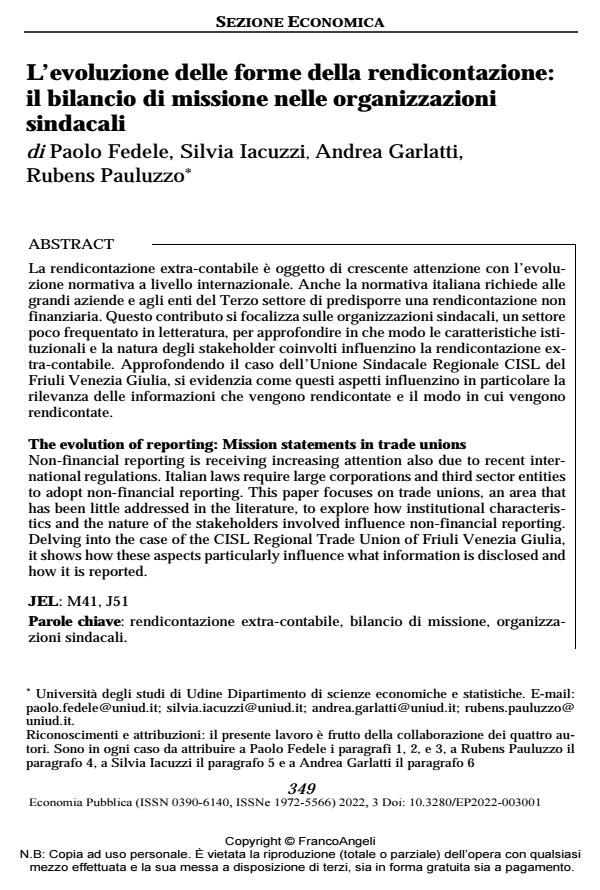L’evoluzione delle forme della rendicontazione: il bilancio di missione nelle organizzazioni sindacali
Titolo Rivista ECONOMIA PUBBLICA
Autori/Curatori Paolo Fedele, Silvia Iacuzzi, Andrea Garlatti, Rubens Pauluzzo
Anno di pubblicazione 2022 Fascicolo 2022/3
Lingua Italiano Numero pagine 24 P. 349-372 Dimensione file 152 KB
DOI 10.3280/EP2022-003001
Il DOI è il codice a barre della proprietà intellettuale: per saperne di più
clicca qui
Qui sotto puoi vedere in anteprima la prima pagina di questo articolo.
Se questo articolo ti interessa, lo puoi acquistare (e scaricare in formato pdf) seguendo le facili indicazioni per acquistare il download credit. Acquista Download Credits per scaricare questo Articolo in formato PDF

FrancoAngeli è membro della Publishers International Linking Association, Inc (PILA)associazione indipendente e non profit per facilitare (attraverso i servizi tecnologici implementati da CrossRef.org) l’accesso degli studiosi ai contenuti digitali nelle pubblicazioni professionali e scientifiche
La rendicontazione extra-contabile è oggetto di crescente attenzione con l’evolu- zione normativa a livello internazionale. Anche la normativa italiana richiede alle grandi aziende e agli enti del Terzo settore di predisporre una rendicontazione non finanziaria. Questo contributo si focalizza sulle organizzazioni sindacali, un settore poco frequentato in letteratura, per approfondire in che modo le caratteristiche isti- tuzionali e la natura degli stakeholder coinvolti influenzino la rendicontazione extracontabile. Approfondendo il caso dell’Unione Sindacale Regionale CISL del Friuli Venezia Giulia, si evidenzia come questi aspetti influenzino in particolare la rilevanza delle informazioni che vengono rendicontate e il modo in cui vengono rendicontate.
Parole chiave:rendicontazione extra-contabile, bilancio di missione, organizzazioni sindacali.
Jel codes:M41, J51
Paolo Fedele, Silvia Iacuzzi, Andrea Garlatti, Rubens Pauluzzo, L’evoluzione delle forme della rendicontazione: il bilancio di missione nelle organizzazioni sindacali in "ECONOMIA PUBBLICA " 3/2022, pp 349-372, DOI: 10.3280/EP2022-003001